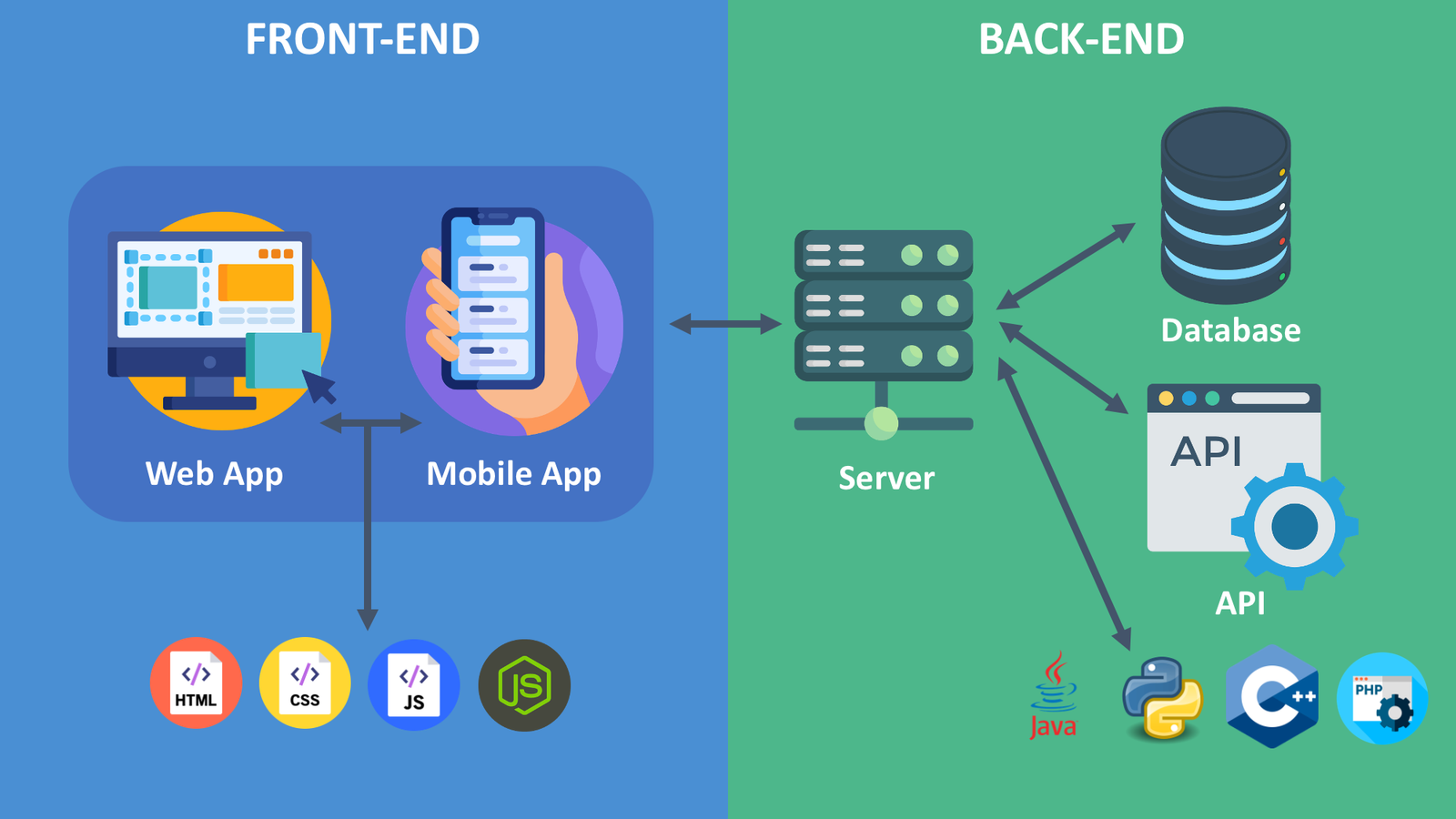The terms frontend and backend refer to different aspects of web development and web applications.
Frontend:
- Definition: The frontend is the part of a website or application that users interact with directly. It’s everything that the user experiences on their screen.
- Languages/Technologies Used:
- HTML (structure)
- CSS (styling)
- JavaScript (interactivity)
- Frameworks/Libraries like React, Angular, Vue.js
- Responsibilities:
- Creating user interfaces (UI)
- Ensuring good user experience (UX)
- Making the website responsive (works across devices)
- Handling client-side functionality (interactivity, animations, etc.)
- Communicating with backend services (through APIs)
Backend:
- Definition: The backend is the server-side part of a web application that handles the logic, databases, and server configurations. It is responsible for processing requests, performing operations, and sending data to the frontend.
- Languages/Technologies Used:
- Programming languages like Python, Ruby, PHP, Java, Node.js
- Frameworks like Django, Express.js, Ruby on Rails
- Databases like MySQL, PostgreSQL, MongoDB
- Server technologies like Nginx, Apache
- Responsibilities:
- Managing databases and servers
- Handling user authentication and authorization
- Processing business logic and computations
- Providing APIs (RESTful or GraphQL) for the frontend to interact with
- Ensuring data security and performance optimization
Key Differences:
- User Interaction: Frontend is visible and interactive for the user; backend is invisible and works behind the scenes.
- Skills and Technologies: Frontend development is more focused on design and user interface; backend development is centered around logic, databases, and server-side operations.
- Interaction: Frontend sends requests to the backend (e.g., for data retrieval), and the backend sends the necessary data or responses back to the frontend.
